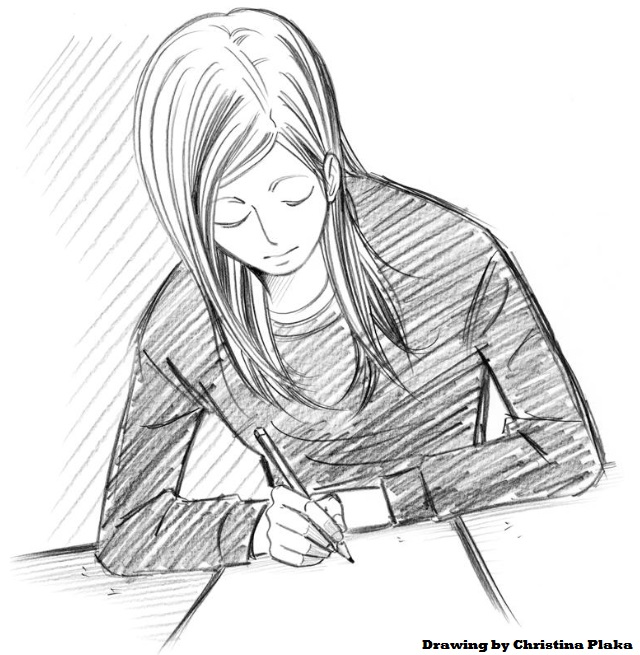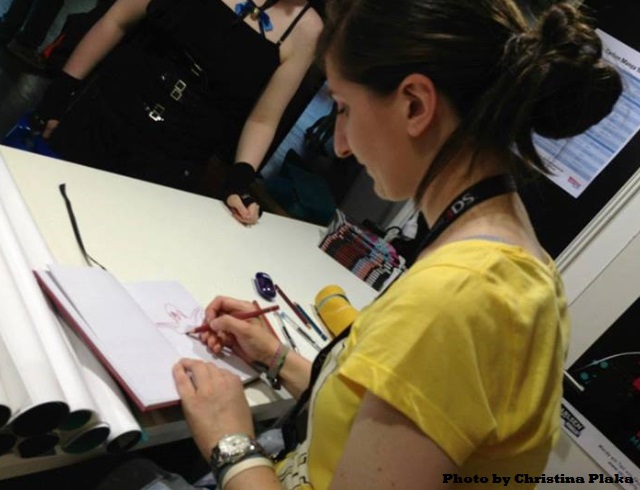Manga made in Germany
Manga are really popular in Japan, but in many other countries around the world, too. So for sure, also non-Japanese people started to draw manga. One of these people is Christina Plaka from Germany.
Christina Plaka took part at a German drawing competition called “Manga Talents” in 2002 which was the first competition in this vein in Germany. With her short story “Vampire 1776” she won second place. Starting from 2003, Plaka published her story "Prussion Blue“ in the first volumes of the manga magazine DAISUKI by the German publisher Carlsen Manga. "Prussion Blue“ tells the story of a young male band making a new start with a female vocalist and trying to win an upcoming competition.

In 2005 Christina switched to another publisher called TokyoPop and continued with the manga series "Yonen Buzz“ which takes place around two years after the first story “Prussian Blue”. The story ends up with 6 volumes. Back at Carlsen Manga another one-shot called "Herrscher aller Welten“ (ruler of all worlds), telling the story of a master thief, was released in 2009.
After her university graduation in Japanese and Romance Studies in 2010, she went to Kyoto Seika University’s Graduate School to do a master course in manga drawing. During her time in Japan, she fell in love with a Japanese guy – and made a manga story out of it. Her manga “Kimi he… Worte an dich” (To you… Words to you) was released this year’s spring in Germany. But it’s not an ordinary manga. The structure is remeniscent of a sketchbook, but it tells the story in a very emotional way.

YokosoNews was able to do an interview with her, talking with her about her life as mangaka, her time in Japan and her current works.
# You started drawing manga very early. How did everything begin?
I drew comic figures since being in kindergarten and elementary school. When I was around 11 years old I started drawing manga figures after watching the first animes in German TV ("Attack No. 1", "Ganbare! Kikkaazu", "Berusaiyu no bara", etc.). At the same time I drew my own characters with self-created plots of these series - until I found "Dragon Ball" manga in the age of 14~15. Since this moment I knew that I wanted my stories to be published in this format.
# What was the first manga you ever read? Which manga and manga artists do you like?
I think my first manga was ”Gunsmith Cats”. Actually my favorite manga is “Shoot!” by Tsukasa Oshima, but since March this year “Slam Dunk” by Takehiko Inoue also made a big jump up to the top of my favorites. As you may see, I love sport manga!
# In Germany you already published several manga. Do you have ideas for new a project yet?
Yes, I have. At the moment I’m working on my latest manga which will be a little more “back to the roots”, meaning it will combine more shojo manga, everyday life, comedy and sports elements and will be more oriented to younger readers. But everything will still take out a lot of time, because my work is obligating me very much.

# After your studies in Germany you went to Kyoto Seika University. Can you give as a little insight in what you have learned?
I didn’t learn so much in drawing, only within the cartoon area. I discovered bande-dessinée and learned that I don’t always have to draw in Japanese style – what you can see in “Kimi he”, too. However, I learned a lot Japanese and I got some basic knowledge with media science and animation.
# How was your daily life during your stay in Japan?
Very calm and quiet. The timetable at university was really easy, such as the tasks. The first year was more stressful than the second one. I spent nearly every day at the university, ate lunch there, played two or three times a week with the volleyball team of the university and for sure went out with friends and professors.
# Your master thesis “Kimi he” was released in Germany this spring. In this you tell about a sad autobiographical love story between yourself and a Japanese man. Would you like to tell our readers a little bit about your book?
Basically it is a story about my unaccomplished feelings towards a priest’s son of the orthodox parish of Kyoto. The whole event spins around my emotions and thoughts about him, until my dream world got broken and I was brought back to the cruel reality by the incident of 3/11 in Fukushima when I had to go back to Germany. If I will ever see him again, isn’t sure until the end…
# Do you plan to publish this book in Japan or in other languages, too?
I really would like to, but the publisher is taking care of the licenses and the allocation of permissions. I would be very happy if “Kimi he” would also be released in foreign countries.

YokosoNews thanks Christina for taking the time to answer our questions and wishes her good luck and success with her future works.